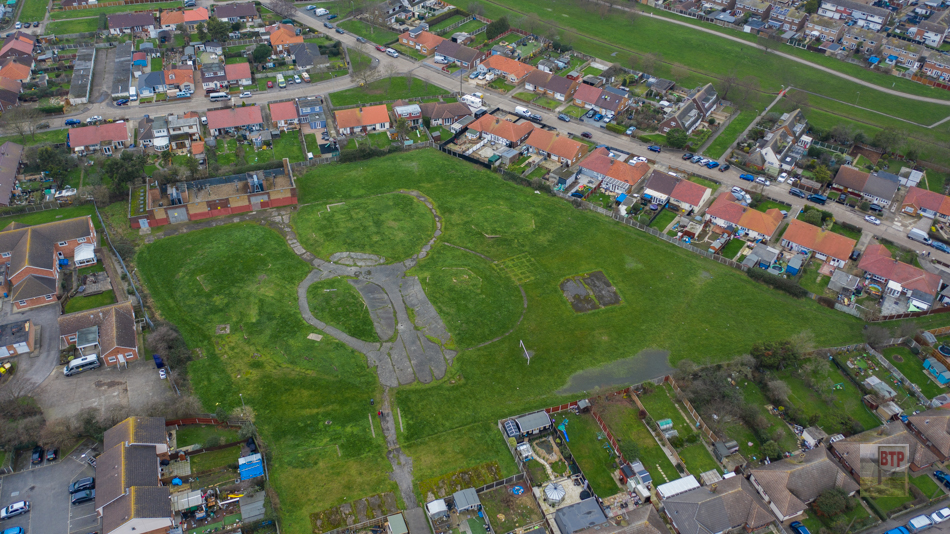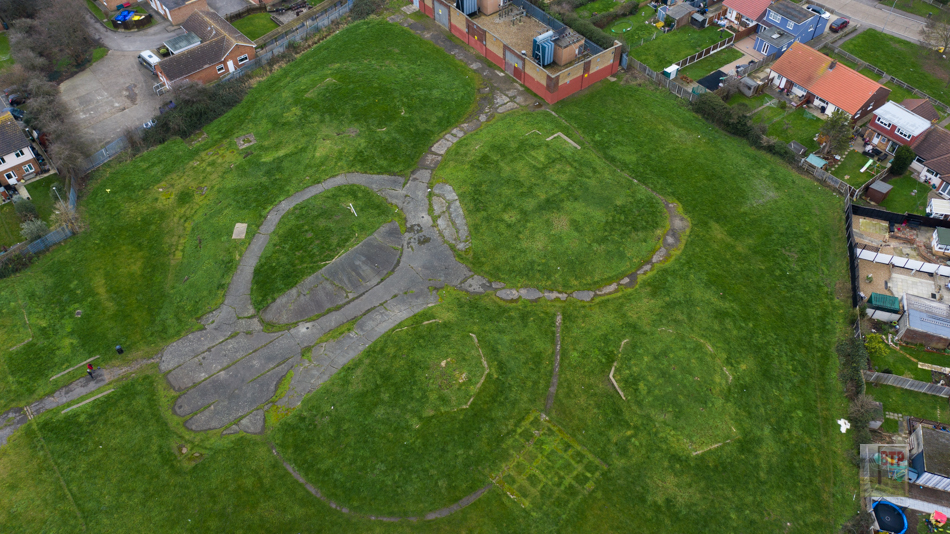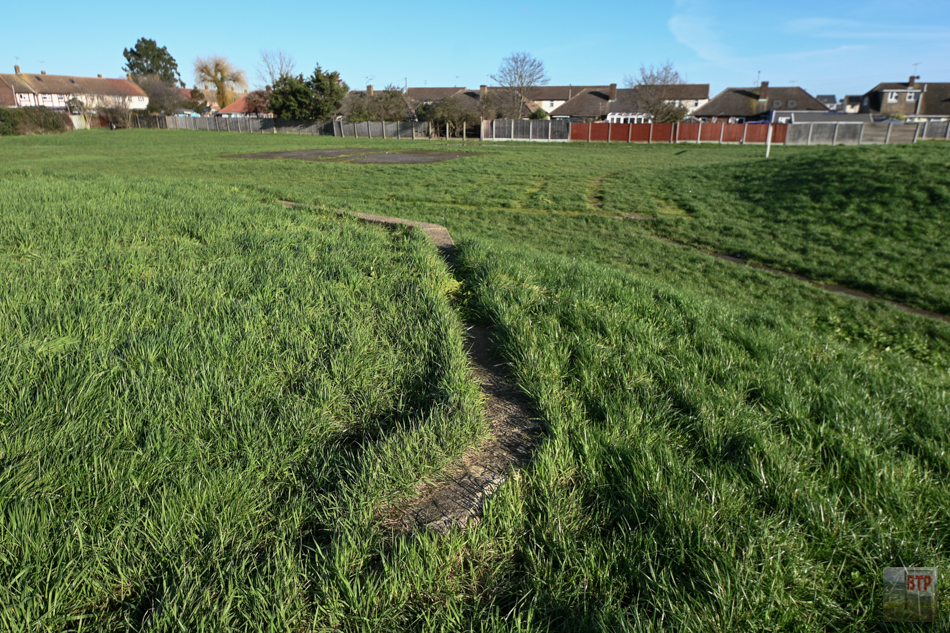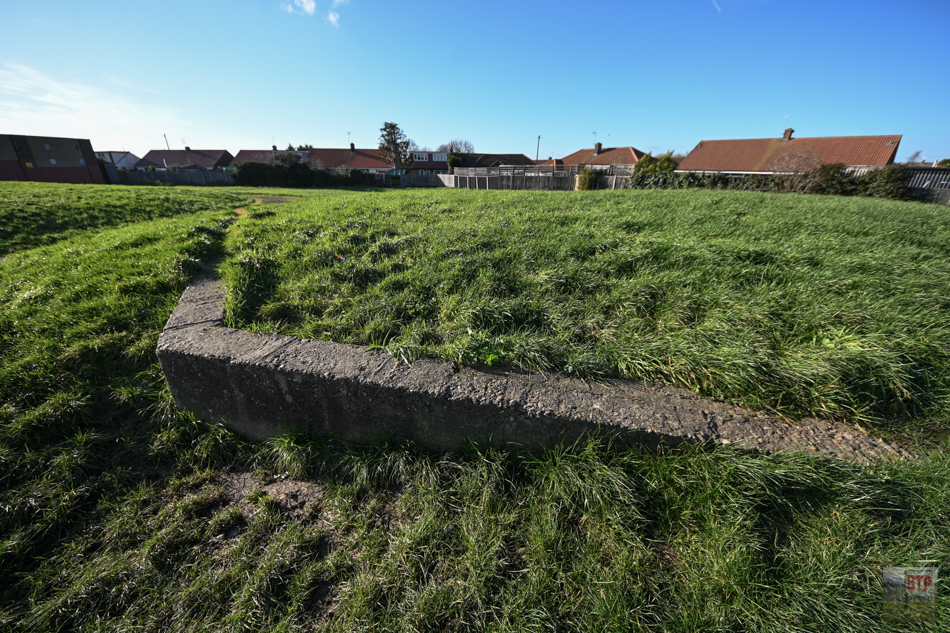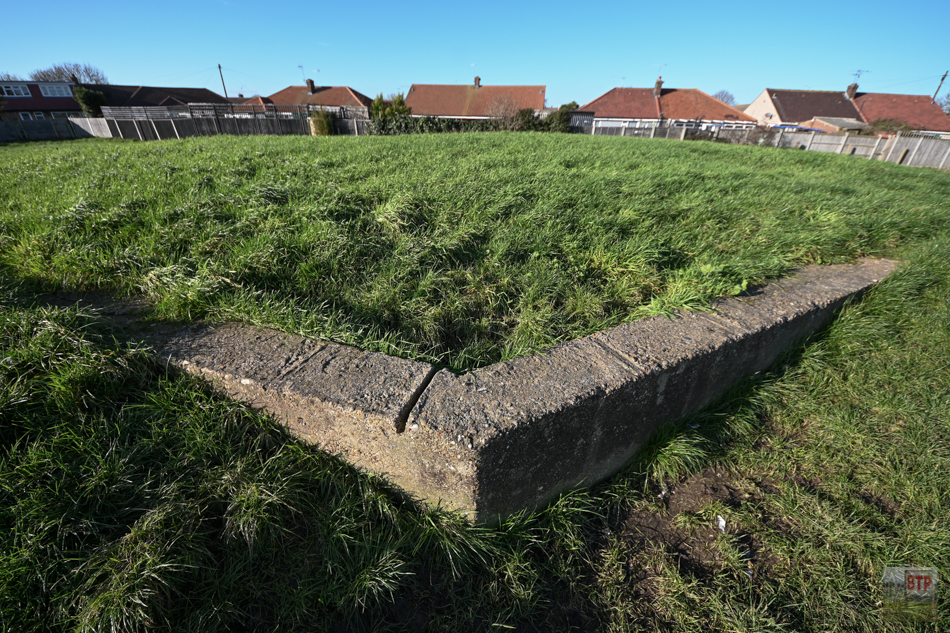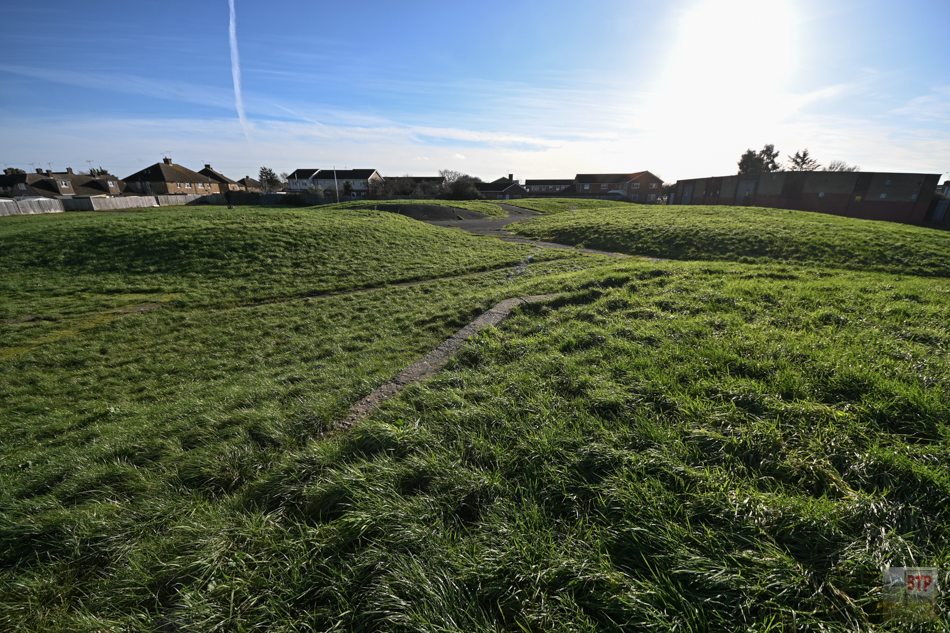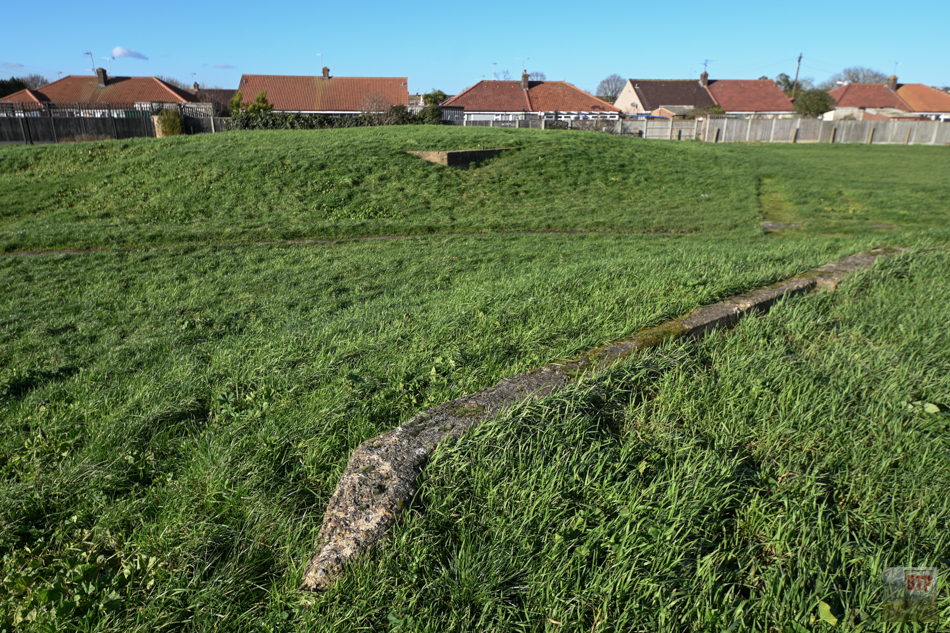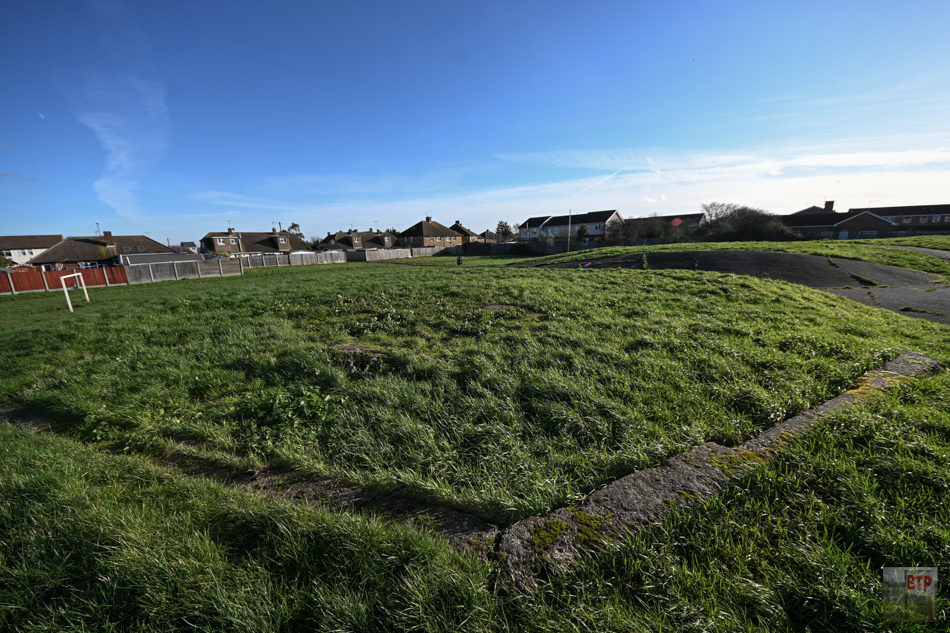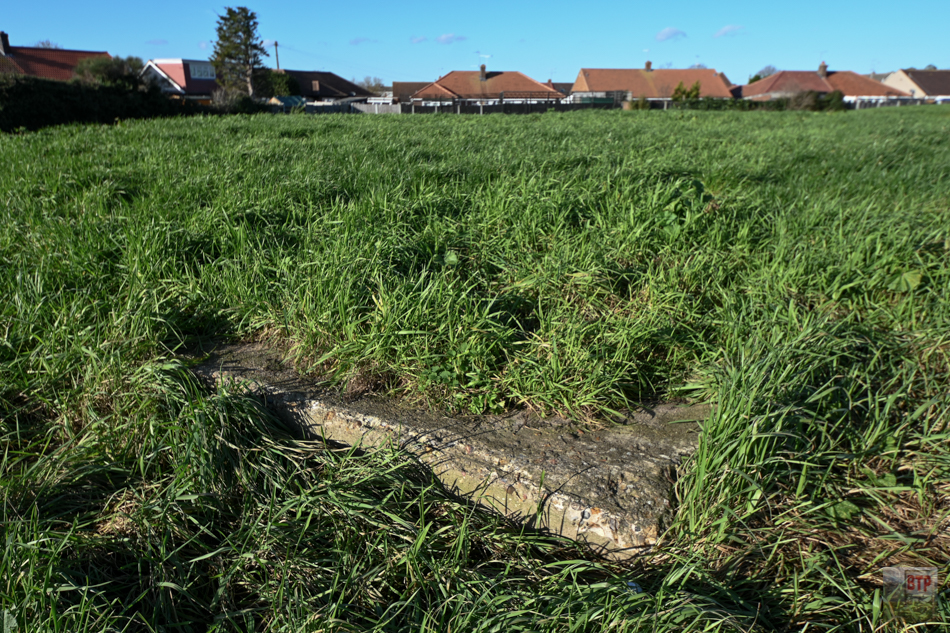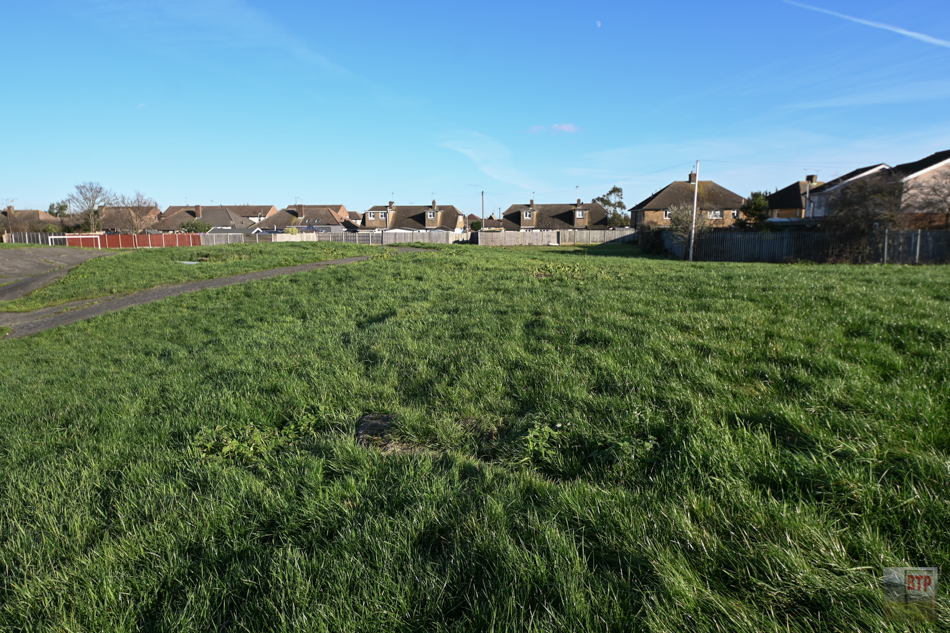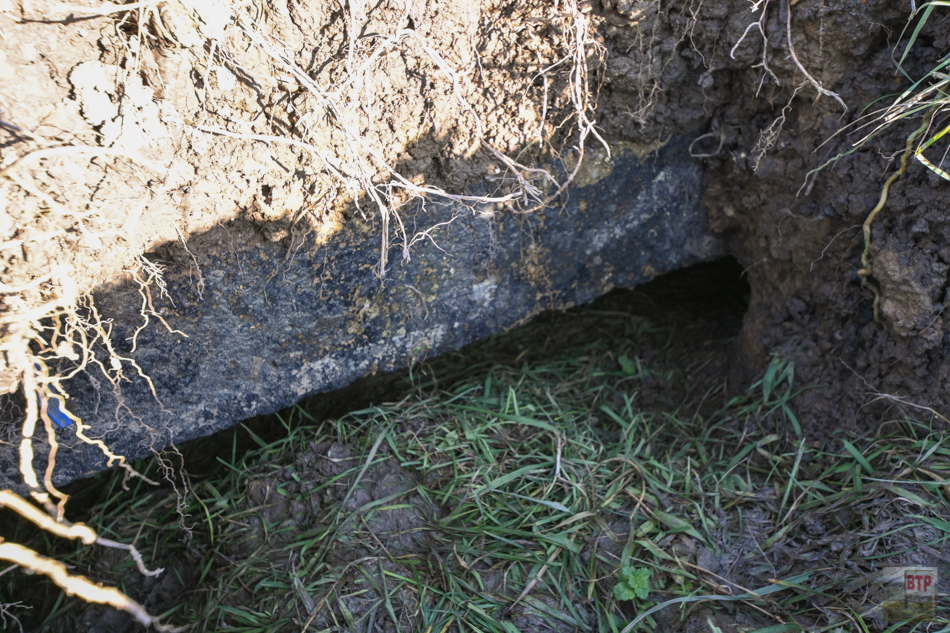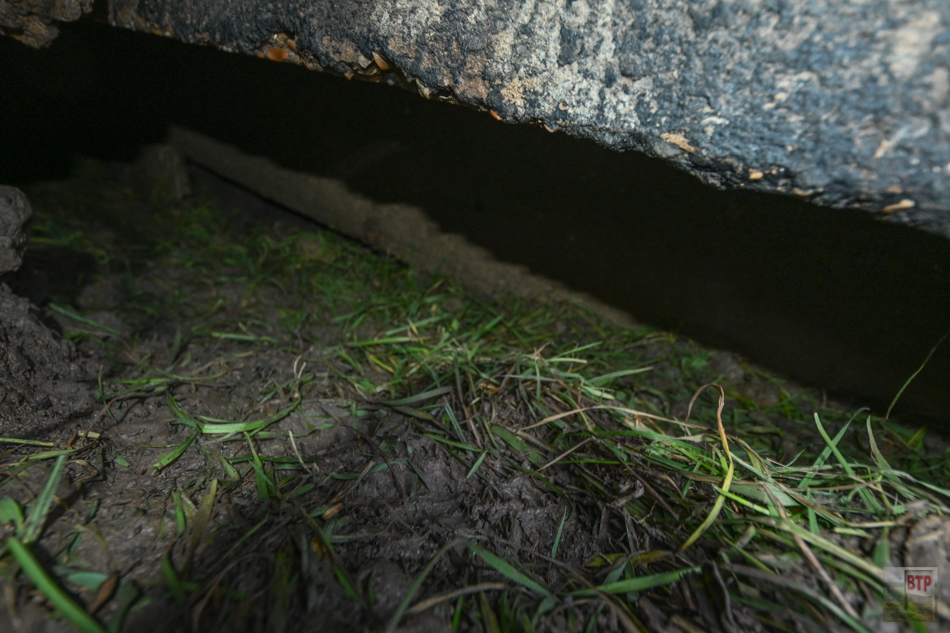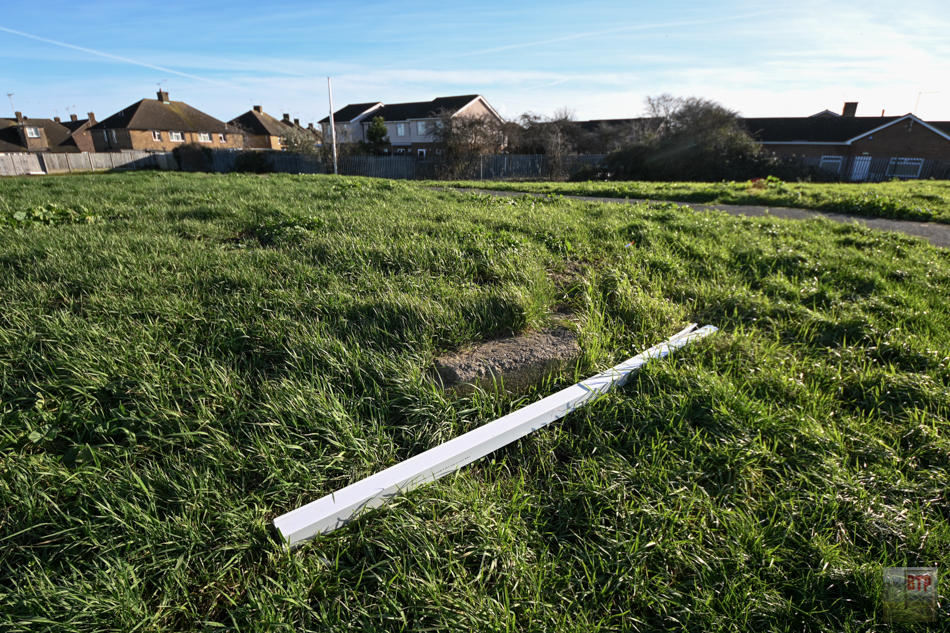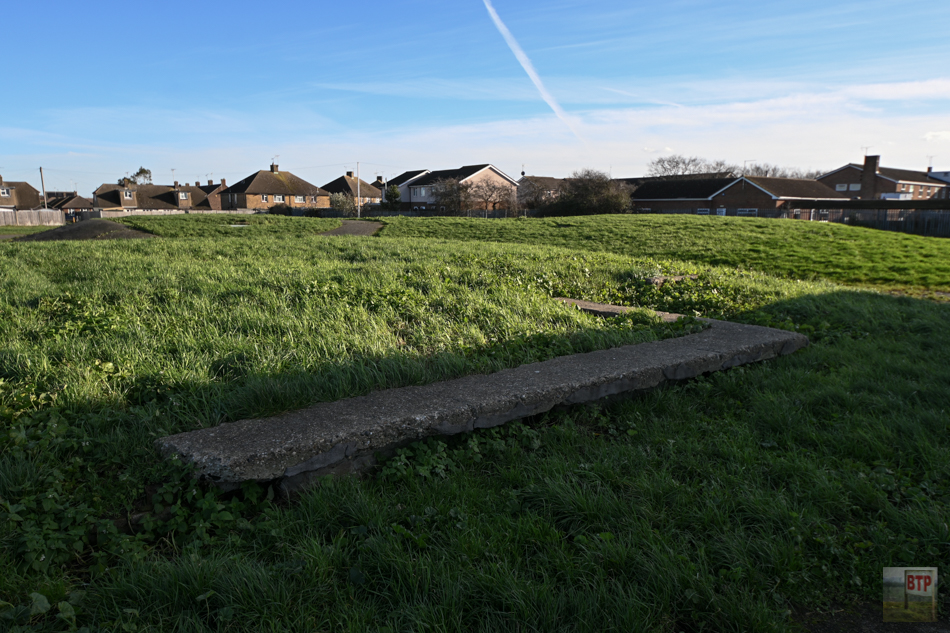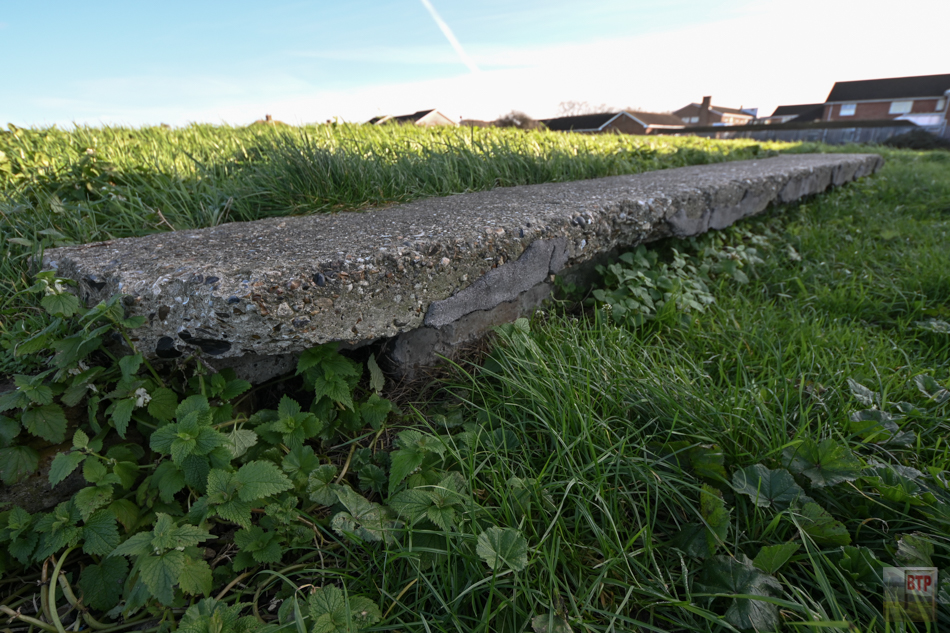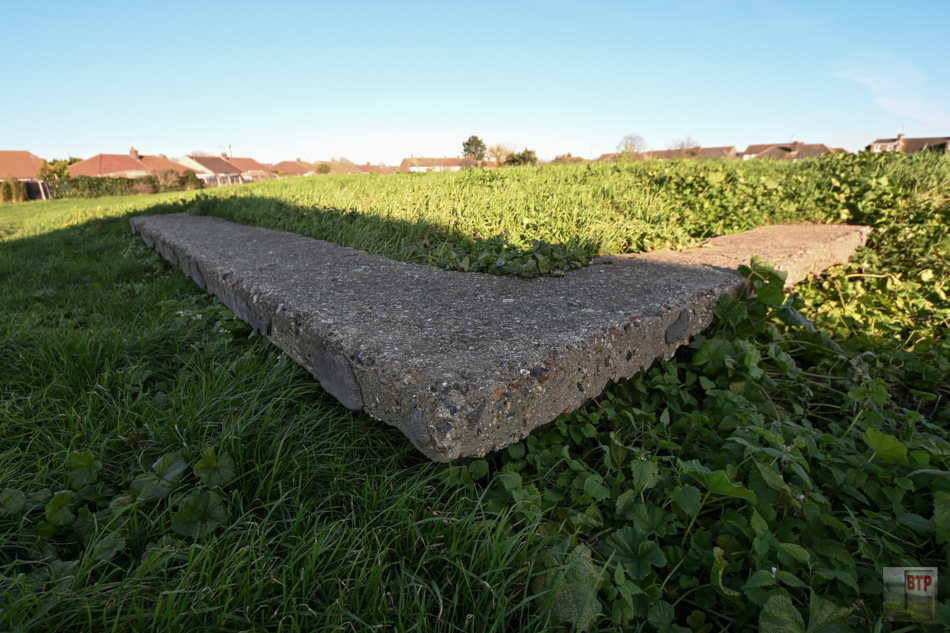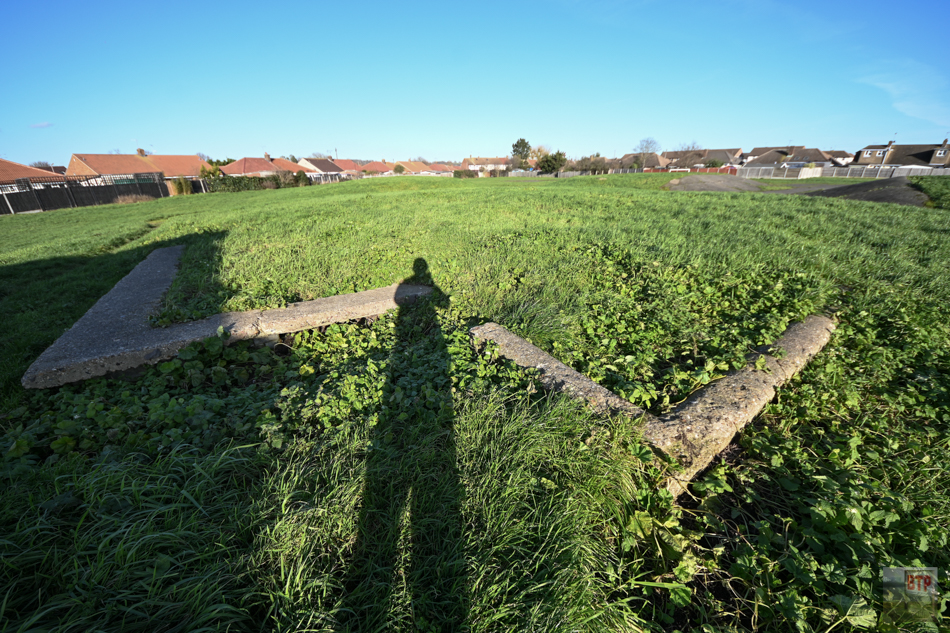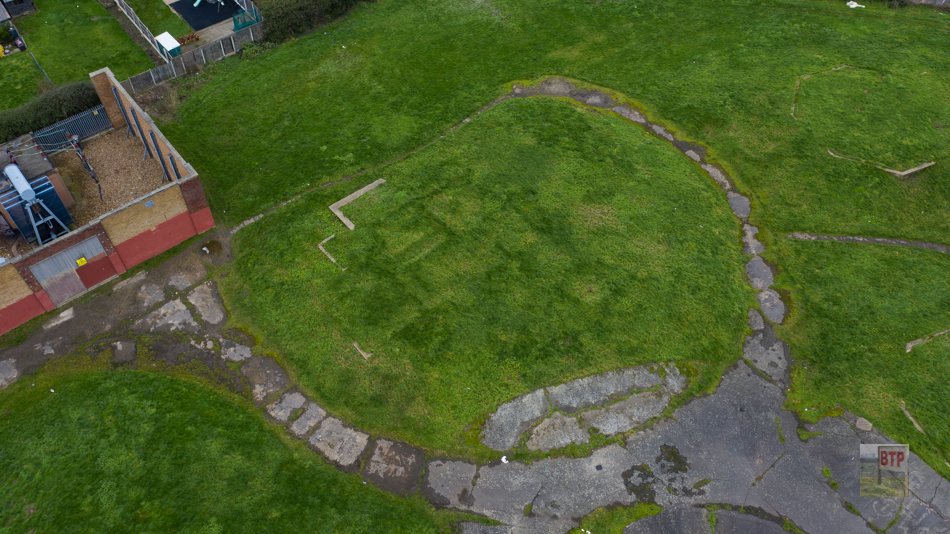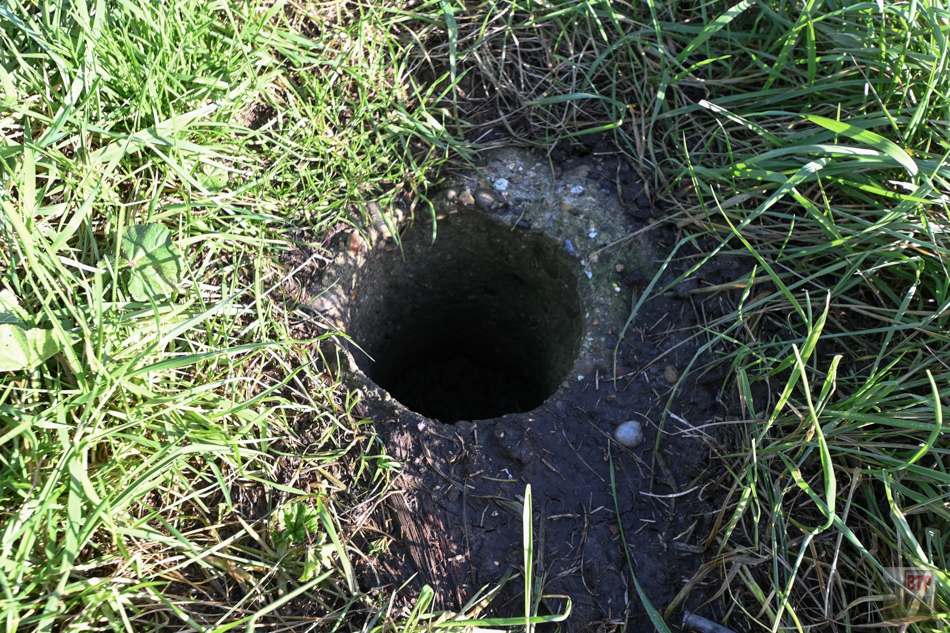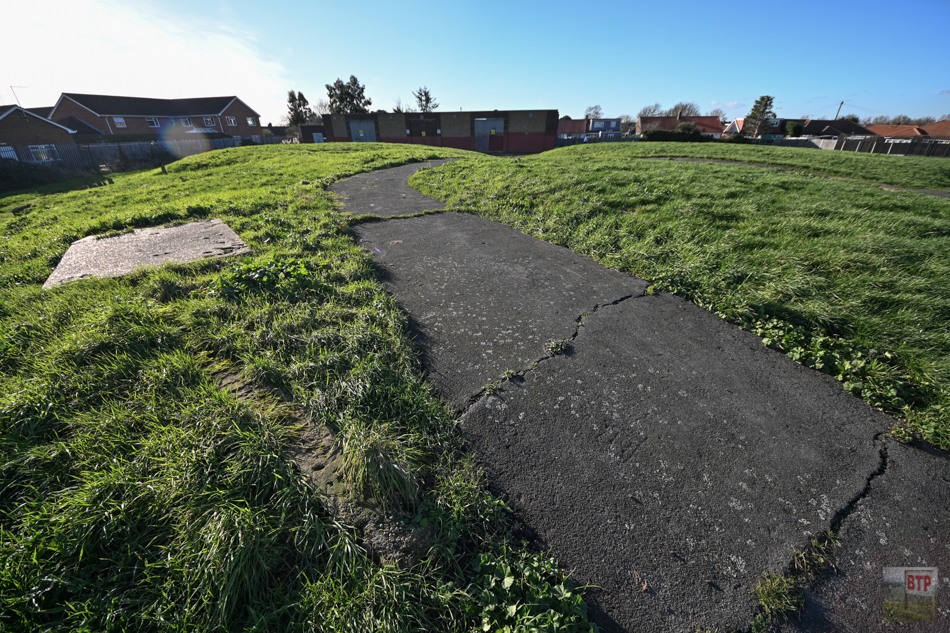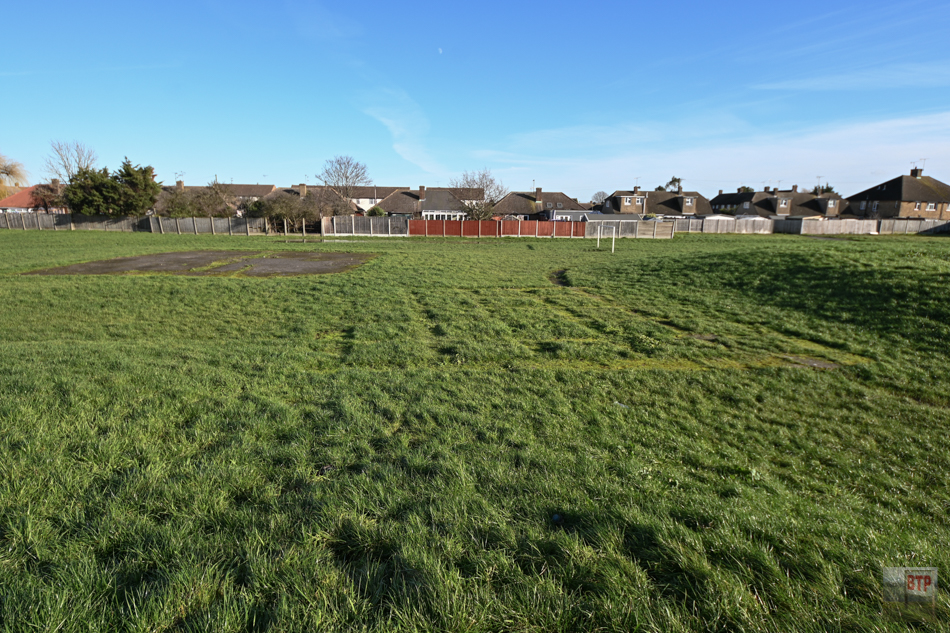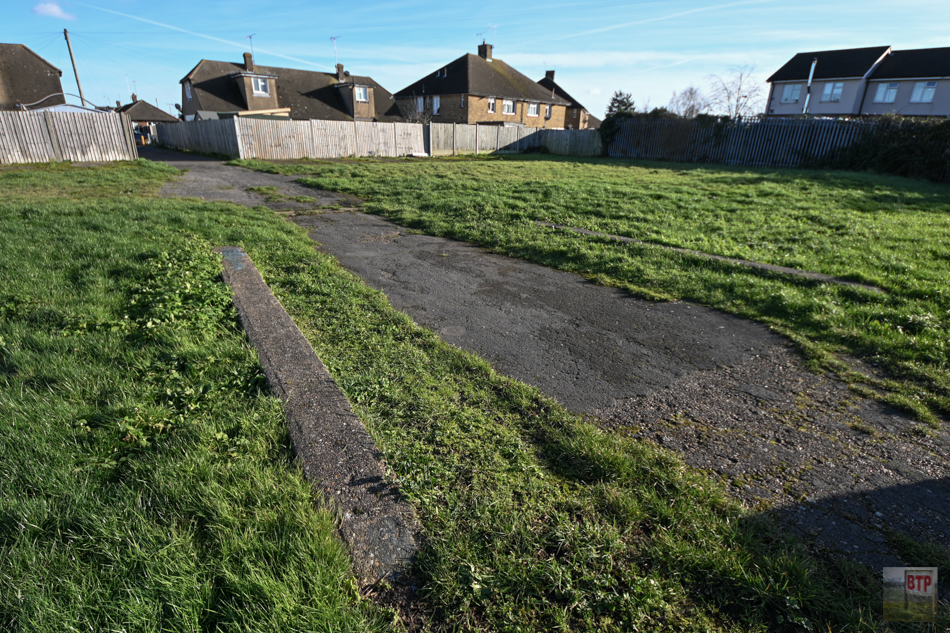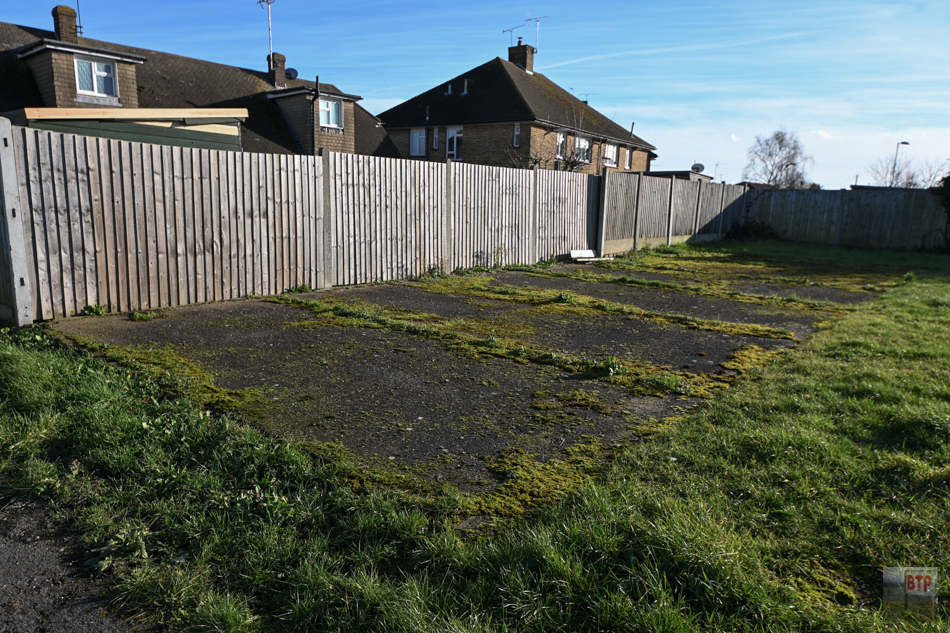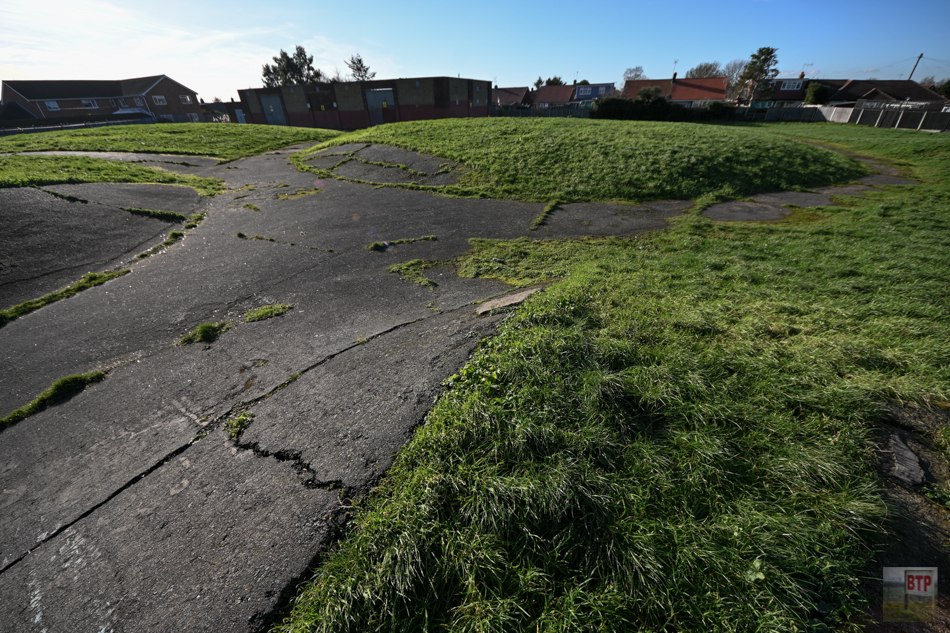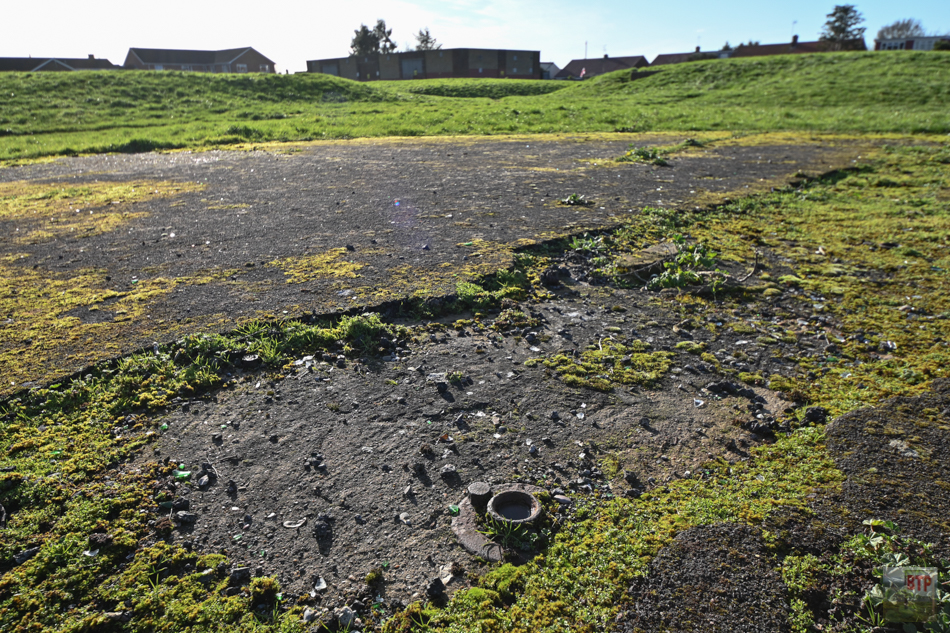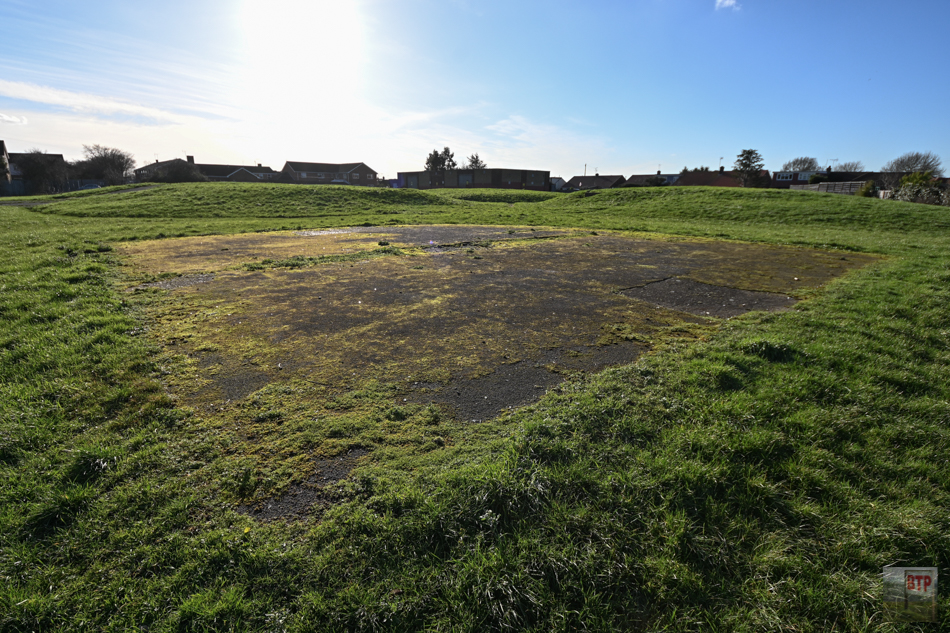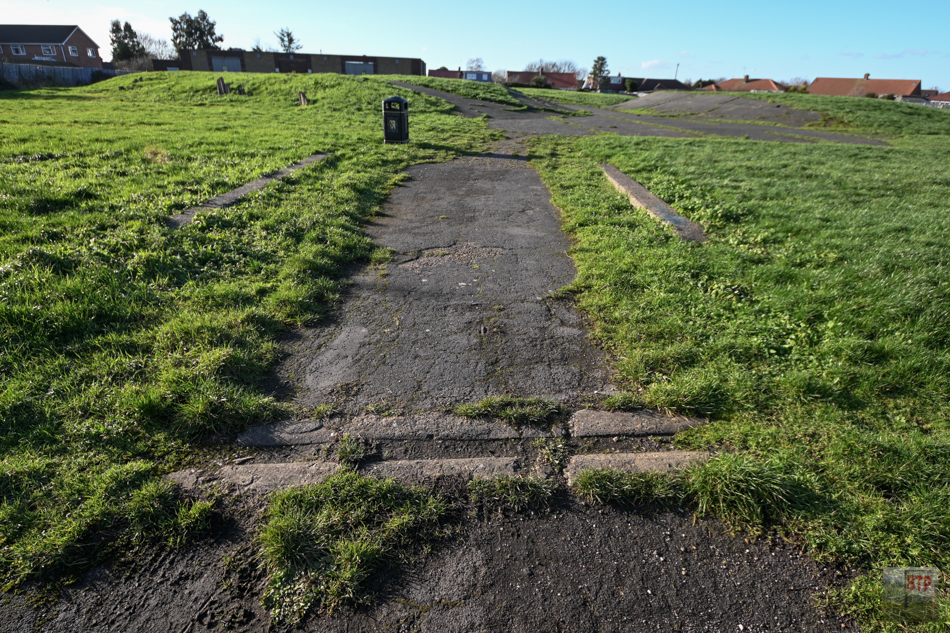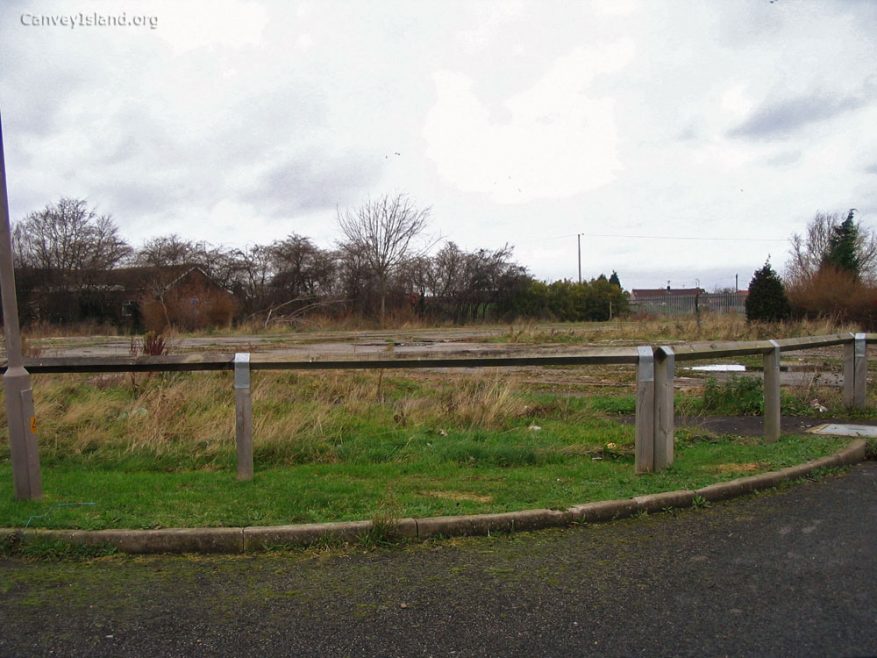Tucked away in the Little Gypps area of Canvey Island is a park known as the Gunny/Gunney, and here there was once a WW2 Heavy Anti Aircraft (HAA) battery designated as TN7 Furtherwick (Thames North battery No.7). There were six gun emplacements, four octagonal early-war pits positioned in a semi circle facing east and another two that were square and added later. These were 4.5inch AA guns. Each section had an bomb proof shelter for the gun crew and an ammunition recesses. A magazine bunker was positioned between the two southern gun pits, with a command bunker at the rear of the semi-circle where the guns would have been directed and targets identified. Here you can see some excellent wartime footage of how an HAA battery would have been operated. Given its location close to the Thames Estuary, it would have formed part of the initial defence against an air raid on London as the river was used as a flight path by the Luftwaffe. Local residents, such as Gerald Hudson who was a young boy during wartime, remember being terrified by the great noise and vibration AA guns caused worse than the threat of German bombing, as they fired incessantly at night during the Blitz of 1940. It is said by locals to have been manned by women or Canadians at various stages of the war. The battery remained in use in the very early Cold War as a ‘Nucleus’ battery, before decommissioning around 1946.
South of the battery that were around twenty various accommodation huts for personnel north from Thameside Crescent. This camp became used by London squatters left homeless by the Blitz shortly after wartime. The hutment is long demolished and replaced with a care home and housing, but the battery survives protected as a scheduled monument buried under earth which was piled on to cover the battery to turn it into a children’s park sometime a decade or two after wartime. Around 1978 it became an informal skatepark which became famous among local children as ‘the Gunney’ amongst the so-called Oil City Skates scene. Various ramps, tarmac and even a wooden tower stood as part of this, which have since largely been removed and even the remaining park features look somewhat abandoned now.
We have visited the site on numerous occasions over 2011, 2013, and 2020 to capture photography and footage of the site seen in this article. In 2015 we were asked by the Big Local Project to produce an informal heritage report, as these charity-funded developers had plans to revitalise the park into a park incorporating the battery and history into it. Sadly, after producing the report, we never heard back and our contact disappeared. Our report is visible here in case it still can be of use. The battery site still remains neglected with no successful attempts to unearth it as of yet.
Below is a late 1940s’ aerial photograph of the unburied battery from Britain From Above, which was overlain upon mid-2010s imagery of the site on Google Earth. Bottom is our drone photography:
Octagonal 4.5inch Gun Pits
The four buried octagonal 4.5inch gun pits are still visible as the main mounds on the site with their corners peeking through the soil. These would have had ammunition lockers and a rectangular bomb shelter attached to the side of each.
Magazine
This is where ammo would have been stored for the guns prior to being loaded into the gun pit lockers. It was a rectangular bunker between the two southern gun pits surrounding by a blast wall in case of explosion. What looks like a recent attempt to dig into it is actually probably the result of a fox several years ago, but it does tease the viewer into what could be beneath the surface.
Command Post
This is where the fire of the guns would have been directed and communications with radar observers and other defensive sites would have happened. It consisted of several buried rooms and open-topped enclosures. A predictor computer as well as range-finding equipment would have helped to fire in the path of raiding aircraft passing down the Thames.
Other Features
Other features of note survive on the site. These include a latticed base for a mystery ancillary building, the square base of one of the demolished later-war emplacements (the other having been replaced by housing), and an original bridge over a ditch at the eastern end of the site – Canvey would have been very flooded and marshy during wartime, and it is thought that the roadways and access would have been upgraded around Canvey to accommodate heavy military vehicles and arms transport. Foundations line either side of the access bridge, but these are probably from post-war garages unrelated to the battery.
Accommodation Camp
According to Dave Bullock’s Article ‘Most of the accommodation area including barracks was demolished and replaced with housing but the large 120ft brick built guard house was used as an ECC Activity Centre, only recently being demolished around 1998.’ Below is Dave’s photograph of the foundations of the encampment around 2007 prior to development, and a late 1940s’ aerial photograph from Britain from Above showing the camp south of the gun battery.
Post-War Skate Park
These photographs show the park in its skating heydey with the tarmaced buried emplacements not looking much different to their present form. The steel girders visible in the left image formed part of the wooden fort which we believe burnt down. The holes in a concrete foundation that these girders went into are likely what is still visible within one of the gun pits today. Also pictured is a skateboard belonging to original member of the Gunney park ‘Herbet Oik’ from 1978 adorned with ‘Oil City Skates’.
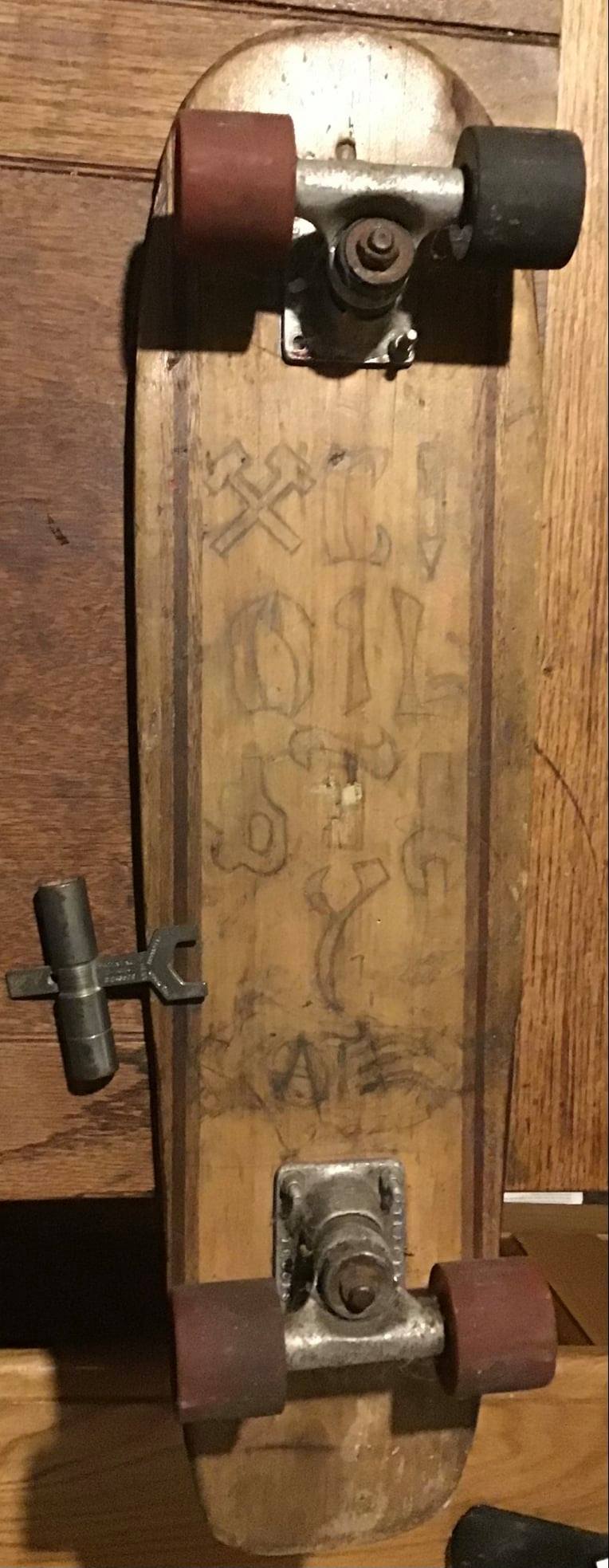
Sources:
https://historicengland.org.uk/listing/the-list/list-entry/1020144
Oil City Skates Facebook Group



